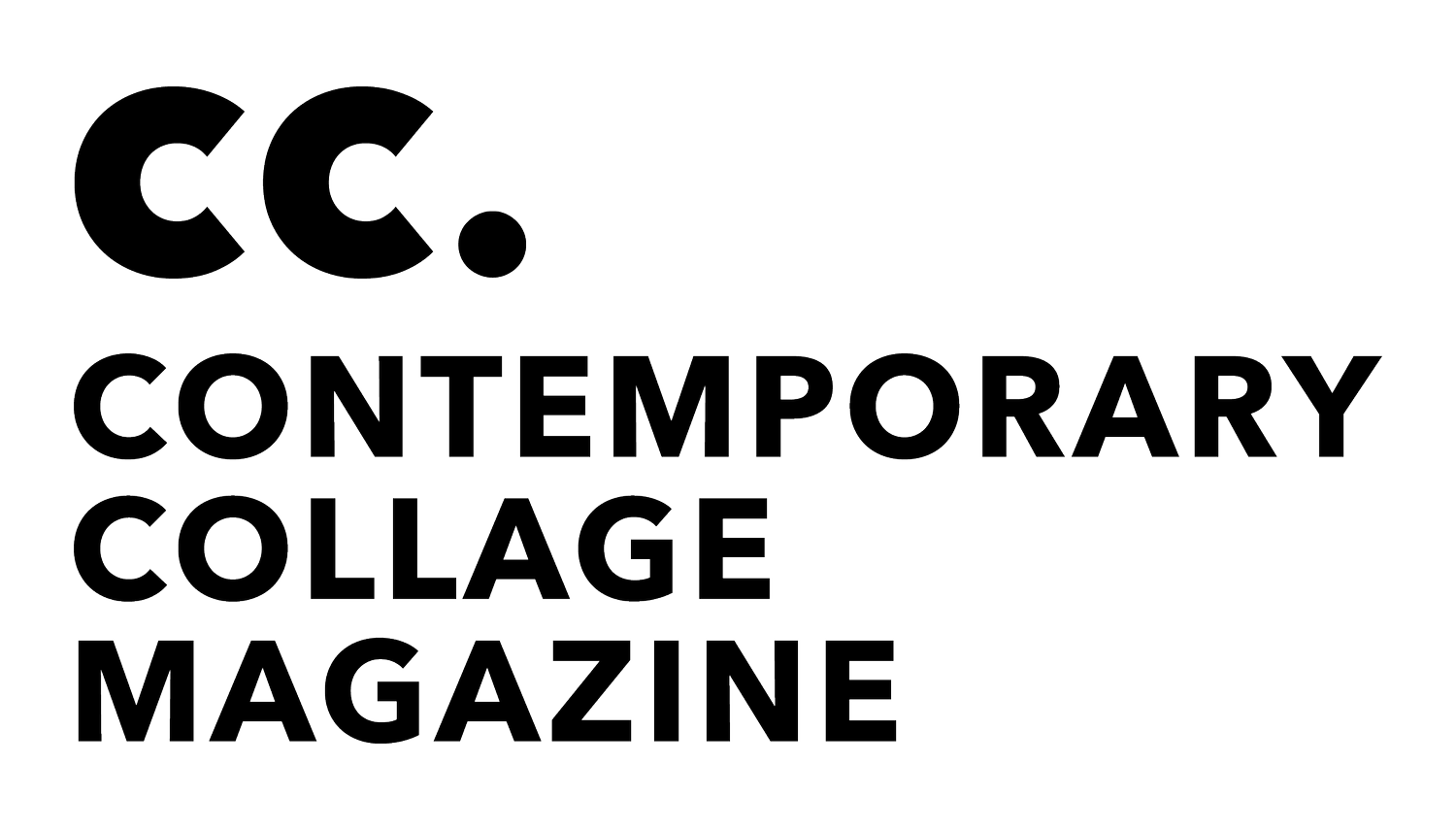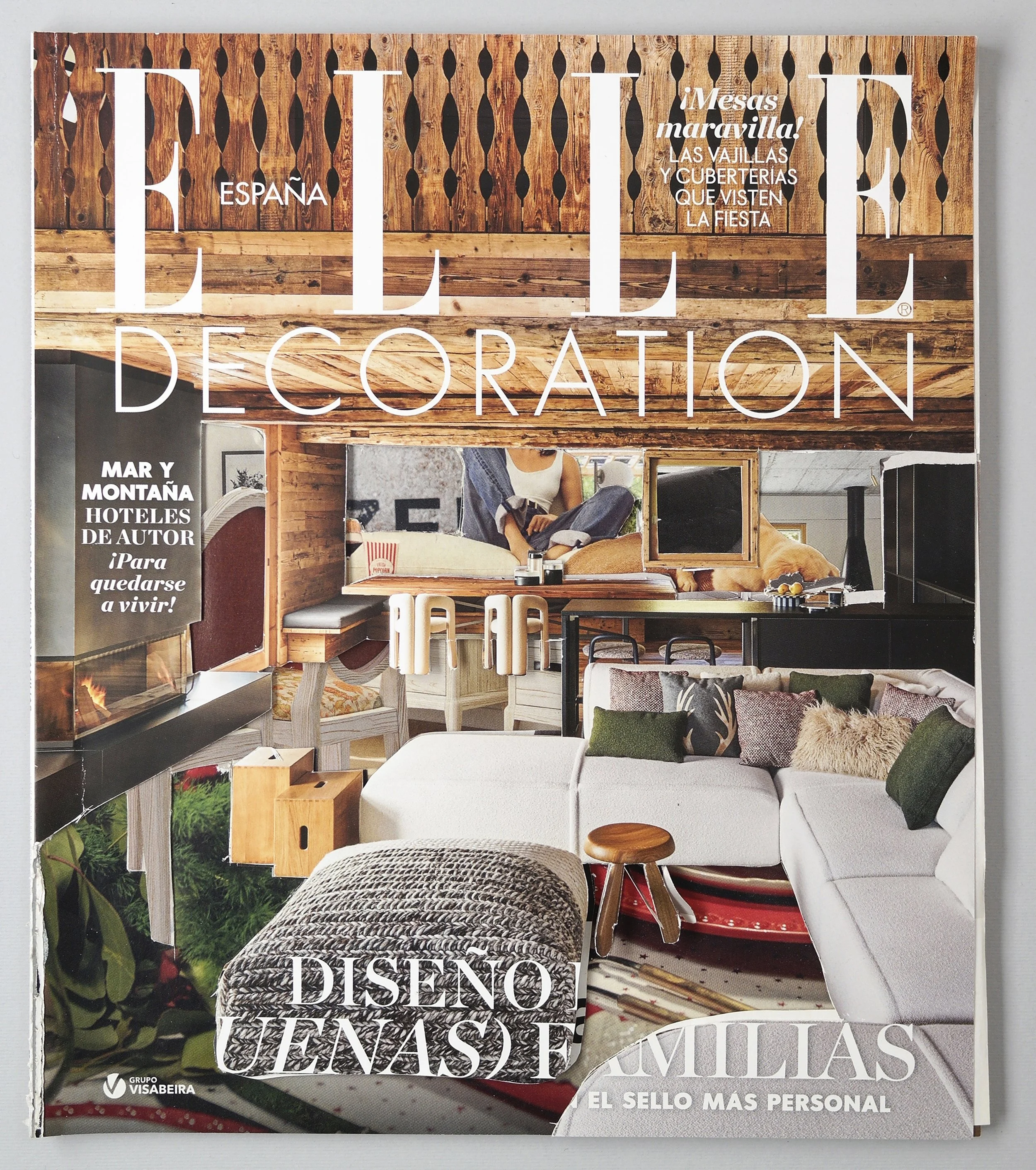10 Questions with : Gabriel Sanz
Gabriel Sanz is a collage artist and illustrator from Madrid, Spain. Using decollage to deconstruct magazine covers to express ideas and metaphors in his work. We sent Gabriel ten questions to answer about his work and practice…
01. When and how did you first get into collage?
I started at different times, depending on whether we're talking about collage or décollage (which means “detach” in French). This series of "necropsies" belongs to the décollage side. My first collages were digital, and I made them in 2014 when I started working professionally with the newspaper El Mundo, illustrating opinion columns. They were digital collages—I didn’t use paper or ever hold a cutter.
Décollage was a different story. I started exploring it in 2023, after discovering the idea and technique in Wolf Vostell’s work in 2022. I didn’t really like his art, but I was very interested in how aggressive the technique felt, both physically and symbolically. I spent a year thinking about how I could use décollage in a way that could express different artistic ideas and create metaphors—not just show decay or destruction in today’s world.
Then in mid-2023, I had a kind of breakthrough. I remembered the hyper-realistic wax anatomical figures at the Specola Museum in Florence, and suddenly it clicked: I clearly imagined how décollage could help me, through something like a dissection, reveal the hidden structures and patterns behind fashion and trend magazines.
02. How would you describe your approach to collage and your specific style?
I believe décollage is quite different from collage, and it’s not just the opposite process, at least not in any qualitative sense. Collage involves assembling cutouts, always under the artist’s control, who guides the composition toward their specific goals, both in terms of content and formal elements. In contrast, décollage involves working with a layered substrate, which naturally allows for the emergence of unexpected elements beyond the artist’s control. This randomness is the heart of this series of “necropsies.” My approach is like that of a surgeon, peeling away layers to reveal what’s beneath, creating a kind of syntax between the strata that make up the pages of magazines. To achieve this, I follow strict rules: I only use materials from the magazine itself, and I never move elements from lower pages to higher ones—the process is always downward. I allow myself to cut, paste, break, twist or bend in any way I can think of.
When I remove parts from a page—be it a face, a background, an arm, or whatever—the empty space left behind forms a kind of frame, offering a glimpse of the page underneath. I repeat this process until the visible surface is a patchwork of colours, objects, and people that, by pure chance, end up resonating with each other in some way—often revealing, somewhat grotesquely, the underlying narrative these publications use to function as seductive displays for the industry of aspirational desire. At worst, the result is a jumbled mess of scraps that make no sense, offering nothing about the market that promotes and spreads trends




03. What would be your artistic statement in terms of what you’re seeking to achieve in your work?
I'm not sure I can make a formal artistic statement, but I do believe there's a personal way of seeing things that clearly shapes both my current work and the pieces I'm already developing. It has to do with how I think we mentally picture the world and ourselves. Even though we live life in a linear way—as a succession of moments—once those experiences become memories, we treat them more like they're laid out on a map. Our mind moves freely over them, and the order in which they happened no longer really matters. Because of this, we often model our vision of the world by putting together thoughts, memories, and feelings that are actually disconnected in time or context, as if they were all happening on the same level.
That’s exactly how décollage (and collage) works, which is why I think it's the perfect medium to represent how we understand things and how we see ourselves.
Here’s an example of what I mean: when the Romans adopted Greek art, they didn’t really care whether a sculpture came from the Archaic, Classical, or Hellenistic period. So Roman version of Greek art ended up being a mix of styles that had originally been separated by centuries, all shown side by side or even blended together.
In the end, whatever its subject, a décollage has the ability to represent the inner workings of our consciousness.
04. What do you want the viewer to get from your work?
I don’t have any specific expectations about how people should react to my work. I'm not trying to get a certain response, and I definitely don’t want to push the audience toward any particular conclusion. These works are what they are.
Each person’s mindset will lead them to see the piece as either worthless or meaningful. It might strike a chord with someone, or it might seem completely confusing. A stone can be used by one person to build a Zen garden and by another to throw at a noisy neighbour. Even though there’s a very clear and deliberate intention behind my work—at least from my point of view—I know that for many people, it might not make sense the way I meant it to. So, they might not get anything from it. Others will interpret it in their own way, and I honestly have no idea what they’ll take from it.
Then there’s a third group of people for whom the meaning will be clear. Some of them will feel that it confirms their beliefs, while others will strongly disagree with the idea behind it.
05. Who or what are your biggest influences and why?
As I mentioned earlier, Vostell was definitely the one through whom I discovered décollage, even though I’m not really a fan of his work. When it comes to collage, George Grosz is definitely my favourite. I like Jim Dine and Mimmo Rotella, but I wouldn’t say they’ve influenced me.
I find Max Ernst’s strange stencils and some of Man Ray’s photos really inspiring, and I’m also drawn to Duchamp’s ideas about art. More broadly, expressionism, dada, and movements connected to dada’s anti-art approach are like the foundation from which my work grows.
To a lesser extent—but still inevitably, because of their interest in the image rhetoric— surrealism and its idea of “convulsive beauty” also leave a trace in my work.
Décollage by Wolf Vostell
06. What ambitions do you have for your art - are there directions you’d like to move in?
A stylistic and formal change I’ll be working on soon is creating the décollage base myself —by layering papers that I’ll paint and texture beforehand. More painterly way, moving away from photography. For now, I don’t have a clear idea of how I’ll approach it formally, probably resort to using folding more to a greater extent, but I do know it will explore themes related to psychology and identity.
07. What do you use as your materials and where do you source them from?
My main material is fashion and lifestyle magazines, since my work so far has been based on intervening in this kind of media. The series isn’t called “necropsies” by accident—it refers both to the fast, self-imposed expiration of trends and to the gradual disappearance and obsolescence of printed publications.
Basically, once a new issue comes out, these magazines turn into shiny, luxurious scrap. So the way I get them is simple: I visit friends and family and and I appropriate their magazines just before they throw them away.
The tools I use are pretty standard: different kinds of cutters, glue sticks, and a stapler. I use the stapler to keep the pages together as a solid block, and sometimes, when a part of a page is left hanging after I remove everything around it but still want to keep it, I staple it in place
08. Can you choose one of your pieces and give us an insight into the story behind it?
A perfect example of what I was aiming for with this series is Necropsy 5 (above). These days, when housing is a serious crisis across Europe—and in Spain it’s one of the main causes of inequality and poverty—interior design magazines can feel pretty absurd. Just flipping through a few pages, you’ll see a parade of massive homes, covered in luxurious materials and filled with high-end furniture that only a very small number of people can actually afford.
With that in mind, my original idea before starting to “operate” on the magazine was to tear it apart and reveal a kind of shredded mosaic of obscene luxury. But as I dug through the pages, what started to show up were spaces, furniture, and objects all using the same colours, lit in the same way, and photographed from nearly identical angles. It was a constant repetition of one narrow idea of what comfort and warmth should look like. All the pages looked almost interchangeable.
There are probably at least 10 partially visible pages in the piece, but nothing stands out as different—it’s even hard to tell which fragments belong to the top pages and which to the ones underneath. That’s clearly no accident. So this décollage ends up being a demonstration, in itself, of how these kinds of aspirational magazines work—how they carefully package and present unaffordable products as objects of desire for regular people.
09. Finish this sentence : Collage is...
the lovable grandfather of décollage. But don’t be fooled—he’s the one who dealt the final blow to 19th-century art.
10. What’s the one question we should have asked you, but didn’t?
What is the most important difference between collage and décollage?
Collage is about recombining images (and objects, if we include assemblage). It’s like someone putting together a puzzle using whatever they find around them—kind of like the A.I. in the novel Neuromancer.
Décollage, on the other hand, breaks things down. It’s like an angry punk questioning the way things are. In décollage, the act itself is always part of the message. In collage, it can be—but it doesn’t have to be.
You can see more of Gabriel’s work on his website and on his Instagram page : @Gabriel Sanz Balfagón
Enjoying the CC. Blog? Support us for as little as £1 per month












